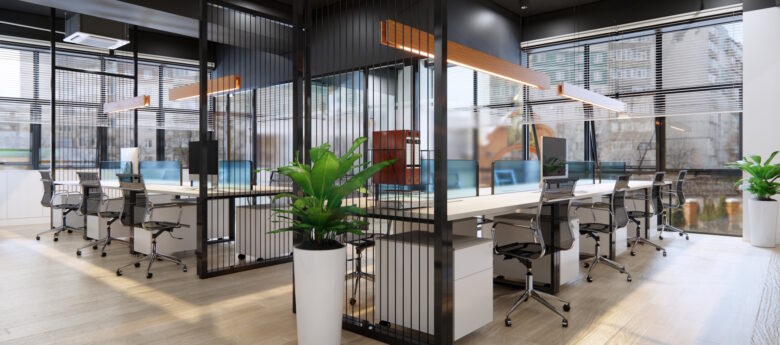Happiness by Design

As facility leaders, you have immense power to improve employee productivity and organizational performance by strategically using the physical environment. The spaces our teams occupy for 40+ hours each week are not neutral. They can profoundly impact wellbeing, engagement, and communication daily.
Research confirms the vital connection between design and employee health, revealing clear best practices: natural light, quiet zones, flexibility, and movement-promoting layouts. Simple tweaks or comprehensive redesign plans enable you to optimize your spaces for a competitive advantage. By staying attuned, you can develop happier, more motivated, and ultimately more successful workforces across the organization. The ROI metrics prove it: spaces can transform corporate culture and drive profits when designed intentionally around people.
Here are some proven strategies to create an environment that combats health concerns and boosts productivity.
Combatting Musculoskeletal Problems With Ergonomic Design
Musculoskeletal disorders (MSDs) are among the most common occupational health issues, often resulting from poor ergonomic practices. An office designed with ergonomics in mind can significantly reduce the incidence of musculoskeletal disorders (MSDs). Incorporating adjustable desks, chairs with proper lumbar support, and monitor stands can help prevent strain on the body. Research from the Ergonomics International Journal indicates that ergonomic interventions can reduce musculoskeletal pain by up to 61%, underscoring the significance of a carefully planned workspace design.
Stress Reduction Through Biophilic Design
Stress is a pervasive issue in the workplace, impacting employee morale and productivity. Incorporating elements of nature through biophilic design can create a calming and therapeutic environment, effectively reducing stress levels. Studies have shown that workplaces with natural light, plant life, and outdoor views can decrease stress and enhance employee well-being. According to a report by Terrapin Bright Green, workers in environments with natural elements reported a 15% increase in well-being and creativity.
Improving Indoor Air Quality for Better Health
Poor indoor air quality can lead to several health issues, ranging from respiratory problems to decreased cognitive function. Implementing design strategies that enhance ventilation and reduce pollutants is crucial. This can include using low-emission materials, advanced HVAC systems, and indoor plants known for their air-purifying qualities. The Harvard T.H. A study by the Chan School of Public Health found that enhanced air quality in offices can increase cognitive function scores by up to 61%, highlighting the direct correlation between environmental conditions and productivity.
Linking Design Choices to Productivity Gains
The evidence is clear: Investing in a well-designed office pays off. Beyond the health benefits, these design choices have been directly linked to productivity gains. Data from the World Green Building Council indicates that productivity improvements from better air quality and lighting alone can increase work output by up to 23%. This data makes a compelling case for organizations to prioritize workplace design as a strategic asset.
The design of an office is not just about aesthetics; it is a critical factor influencing employee health, well-being, and productivity. Businesses can create environments that promote health and drive performance by addressing musculoskeletal problems, stress, and indoor air quality through thoughtful design. “Happiness by Design” isn’t just a concept—it’s a strategic approach that yields tangible benefits for employees and organizations.
Mike Szczesny is the owner and vice president of EDCO Awards & Specialties, a dedicated supplier of employee recognition products, branded merchandise, and award plaques. Szczesny takes pride in EDCO’s ability to help companies go the extra mile in expressing gratitude and appreciation to their employees. He resides in Fort Lauderdale, Florida.
